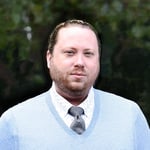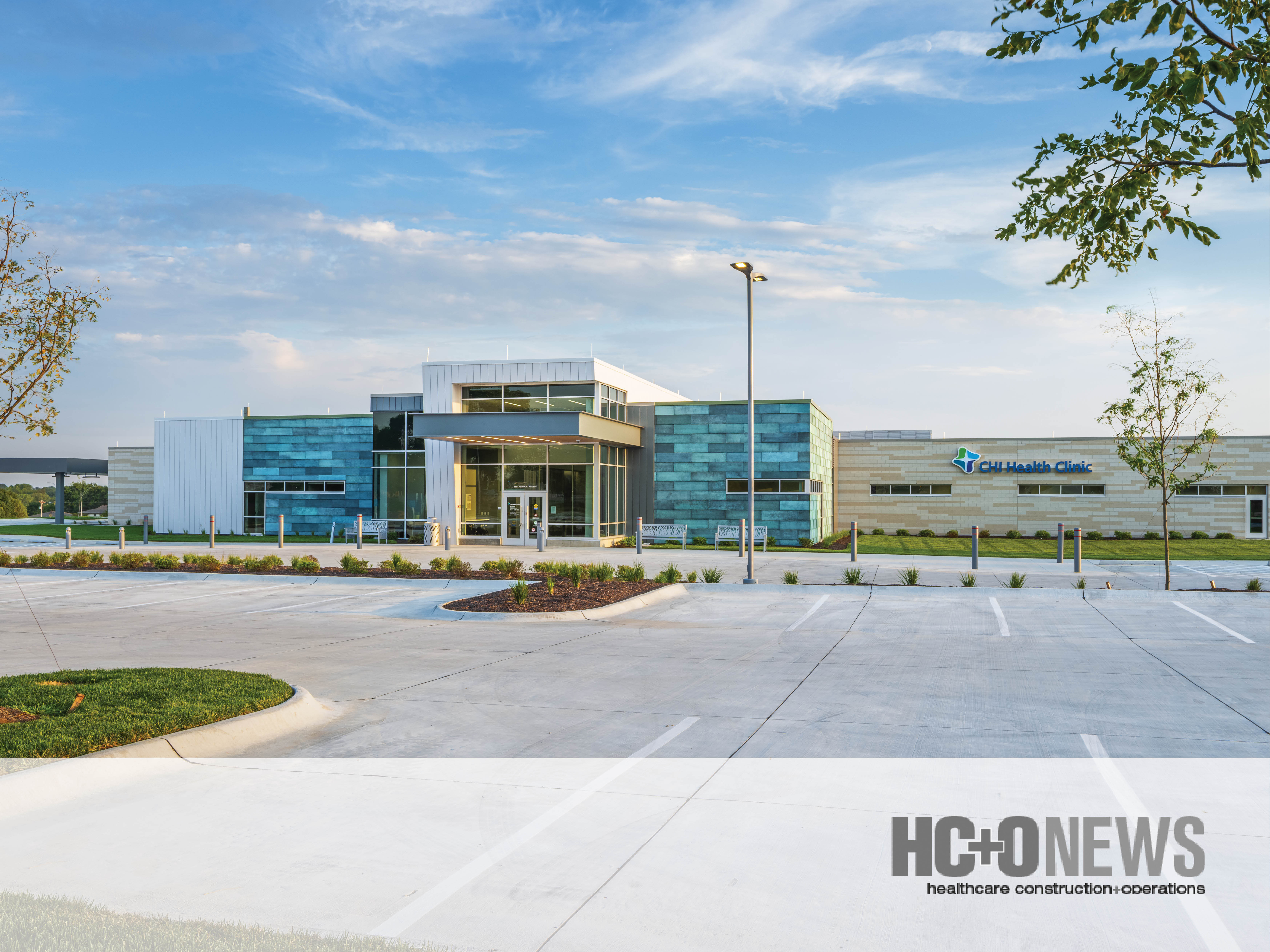Founded in 1996, Hoefer Welker has seen significant changes in the world of architecture, from technology and hiring to how firms interact with clients. We sat down with three architects at Hoefer Welker, each at a different place in their career, to explore what has changed, for better or for worse, and how the firm has continued to grow and adapt.
 Although Erik Higgins has only been a designer with Hoefer Welker for two years, he’s been in the industry for two decades now and has seen things ebb and flow over that span of time.
Although Erik Higgins has only been a designer with Hoefer Welker for two years, he’s been in the industry for two decades now and has seen things ebb and flow over that span of time.
As a kid, Higgins found himself drawing often, and of course, playing with LEGO.
“I drew buildings, mostly,” he said. “I think I drew my parents’ house 1,000 different times.”
That love of perspective drawing and building houses out of shoeboxes proved that from an early age, he was curious about the built environment. Today, Higgins is vice president and senior project manager at Hoefer Welker, where he specializes in healthcare and commercial design.
Regardless of trends toward wellness and acute care, healthcare will always be a priority for the communities Hoefer Welker serves, and Higgins says it will continue to keep him busy.
“It’s always evolving, which keeps things interesting,” Higgins said.
 Nearly 11 years into her career, Katherine Waldrop has been with Hoefer Welker since she graduated college.
Nearly 11 years into her career, Katherine Waldrop has been with Hoefer Welker since she graduated college.
She set her intention in kindergarten, writing, “I want to be an architect when I grow up” on blue and red-lined paper, and she never wavered. A graduate of Kansas State University, Waldrop learned all aspects of design while in school and really grasped onto the technical side of things while staying true to her passion for art and drawing.
“I think the only thing I ever wanted to be was an artist,” Waldrop said. “I loved creating things and drawing and working with my hands. I even did woodworking when I was little.”
In architecture, she said she can use her strengths to circumvent her challenges, like reading. Waldrop is dyslexic and grew up with a learning disability as it relates to reading, but architecture allows her to put her other talents to use.
 Mitch Hoefer, CEO and founding partner, spent a decade working in architecture before starting the firm. He said architecture probably saw the most drastic changes during that time, going from drafting tables and drawing on Mylar to becoming the first generation to work on computers.
Mitch Hoefer, CEO and founding partner, spent a decade working in architecture before starting the firm. He said architecture probably saw the most drastic changes during that time, going from drafting tables and drawing on Mylar to becoming the first generation to work on computers.
“It was painstaking, and nothing compared to the lightning speed of technology today,” he said. “I look at pictures from the 1950s, and those drafting rooms look just like mine did in 1981. Now it’s a whole different world.”
Society, in general, was using telephones and fax machines for communication instead of today’s expectation for immediate communication, he said.
Changes Through Career Growth
Now in management, Higgins said his day-to-day has changed, as he’s less involved in design and documentation and approaches projects from a client satisfaction perspective. But when he started his career, he was simply drawing without seeing how the decisions were made.
Higgins said he’s seen a rapid evolution in the last 15 years in how the work is produced, going from drawing everything in 2D to creating models in a 3D built environment. This should change the paradigm on how students in architecture school are being taught, as they aren’t learning constructability or codes in college, he said.
“Now, instead of saying here’s a set of documents, here’s a set of drawings, this is what the end product should look like, we have to spend a lot more time teaching and training,” Higgins said. “A lot of it is very practical information that they’re just not learning in school.”
A lot of what is learned is taught on the job, Waldrop said, and she’s been a quick study. While gender didn’t prevent her from succeeding at Hoefer Welker, Waldrop said becoming a mother has brought a new perspective to her work. The personal barriers she casts on herself and the internal expectations have been challenging, regardless of how amazing her husband is, she said.
“I’ve created this burden on myself,” Waldrop said. “Nobody told me that I needed to be at work long hours. I used to be able to do that, and now I simply can’t. So, I’ve had to create a new way to be just as successful as I was before and find a new balance.”
This perspective has now made her work harder, faster and smarter, and be more efficient. Hoefer Welker’s commitment to diversity through support of the whole person and growth extending beyond receiving a paycheck for working parents like Waldrop is stronger than ever.
Technology’s Role
Recent graduates are coming into the workforce with more knowledge of technology than ever before. This provides a little bit of trade-off from the practicality and functionality with more tools, data points and data analytics that can help architects inform design.
“If you’re not already doing that today, you’re way behind,” Higgins said. “While helpful, I don’t ever see it replacing the architect, but there are definitely tools that are helping us to automate a little bit of the design process.”
The good and bad of it is that technology helps crank out ideas quickly, but without real-world experience and challenges, he said. It also doesn’t build in taste.
Waldrop’s education at K-State sort of rooted her in an anti-technology mindset, and much of what she learned was hands-on. Stepping into the workforce, though, she learned quickly that doing work on the computer was a necessity, no matter how good her drawing skills were.
She then learned to embrace the inevitability of technology without losing her skills and artistry. In the interview process after graduation, she had to put her best foot forward with what she could do on the computer because that is ultimately what she was judged on. She assumed that would be the case at Hoefer Welker, too.
However, in the civic studio, designers go through charettes, a fun and immersive process where designs are completed on the fly by hand.
“I thought we would design on the computer, and then we were back to designing by hand. I learned that you really have to have skills in both,” she said. “If you’re not capable of drawing by hand in some capacity, even just a small sketch on a napkin, then you’re not using all of your tools to communicate.”
The technology has advanced, with Revit coming out with new versions on a regular basis, but Waldrop said the skills of the architect have remained the same. Things may have gotten easier and quicker with the help of computer programs, but the end result has remained unchanged.
“No matter how fast technology grows and differs and changes, which is all cool and exciting, without drawing with your hand, you’re not communicating to your full potential,” she said. “I will always lean on the fact that I have the ability to communicate quickly with a pencil.”
Her role at Hoefer Welker has changed in the last decade, something that Waldrop said is a natural progression as you grow and age at a firm. While her responsibilities look different now, the most drastic change has been communication with clients.
“I don’t think anyone recognized until Covid hit that all of these meetings could be digital,” Waldrop said.
The ability to get real-time feedback from clients and owners in a timely manner has changed everything, she said, including travel and turnaround time on decisions.
Hoefer agrees. The speed-to-market capabilities with technology and communication have Hoefer Welker getting projects over the finish line quicker than ever before.
Artificial intelligence plays a role, too, that Hoefer Welker’s leadership is monitoring. Designers, Hoefer said, are programming AI with rhythm, proportion, and concepts and it is spitting out ideas that are thought-provoking.
“They’re not solutions,” Hoefer said, “but they are really fast-forwarding the thought process.”
Innovation
Fundamentally, the way architects design buildings hasn’t changed much from the way the pyramids were built 5,000 years ago, Higgins said. Everything is still documented and drawn. Humans have had the ability for years now, technically speaking, to help us do our jobs in terms of generating ideas, yet we’re still drawing drawings.
“You’ll never move the architect from that,” Higgins said. “The computer can’t replace us. It can support, but it’s not going to replace us.”
Hoefer Welker has become more sophisticated across the board as time has progressed, Hoefer said. Projects have gone from small tenant refinish jobs to major developments, office buildings, hospitals, and federal work all across the United States. The firm has grown from 3 to 180 people through all of the dynamics and growing pains along the way, Hoefer said.
“It’s changed how we market ourselves. It’s changed how we approach our clients and the work we do,” Hoefer said.

 Although
Although  Nearly 11 years into her career,
Nearly 11 years into her career,  Mitch Hoefer
Mitch Hoefer

